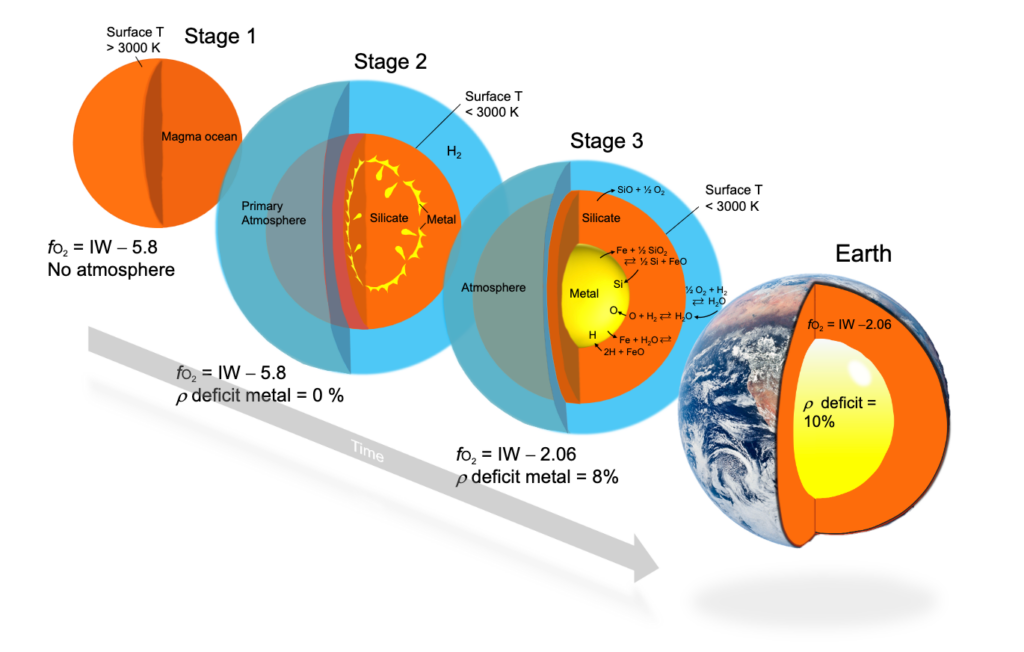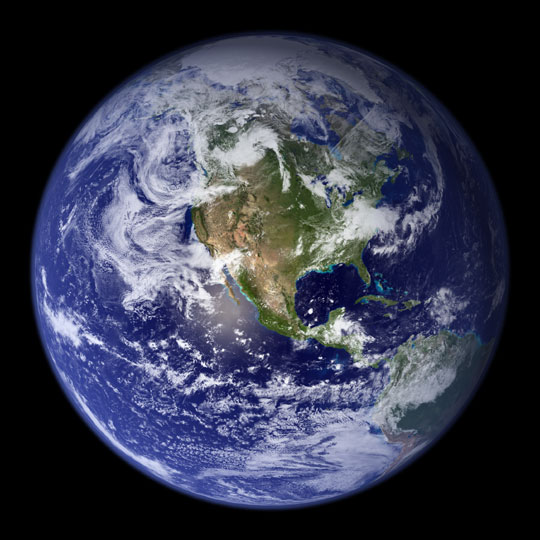Title: Earth shaped by primordial H2 atmospheres
Authors: Edward D. Young, Anat Shahar, Hilke E. Schlichting
First Author’s Institution: Department of Earth, Planetary, and Space Sciences, University of California, Los Angeles, USA
Status: Pre-print on arXiv
The prevailing assumptions about how the Earth got its water and oxygen are being challenged by updated thermodynamic models that took a hint from observations of exoplanets. A young, dry earth could have ordered in, and been delivered a delicious meal of water-rich comets and asteroids, but today’s article suggests it could have made its oceans at home.
Ordering takeout oceans
Water is important for life, but we don’t exactly know how Earth ended up with so much of it. Sure, a majority of the Earth’s mass is rock, but we have a whole surface covered in liquid water oceans and an atmosphere that is about 4% water vapor by volume. We know the Earth formed from a protoplanetary disk, but our best measurements of the composition of that disk of planetary building blocks (which come from pristine asteroids) tell us that the inner protoplanetary disk was very dry. That is, we expect the inner regions of the protoplanetary disk to be fairly hot (because they are close to the newly formed Sun), and all of the water to be in the gas phase, where it can’t be easily incorporated into a forming terrestrial planet. Therefore, it’s thought that a large portion of the Earth’s water was delivered by collisions with wet comets and asteroids from the colder, wetter outer solar system.
“We have water at home”
There is an alternative theory for the source of the water, but it involves a bit of extra work for our young Earth. Many exoplanets have been observed, some with rocky surfaces, others with puffy atmospheres, and some we observe to be losing their puffy atmospheres in real time! These puffy atmospheres are mostly molecular hydrogen, H2, the most common gas in a protoplanetary disk. The only trouble is that most planets, especially planets as small as Earth, aren’t heavy enough to trap light hydrogen molecules in their atmospheres for long. This H2 atmosphere slowly floats away over millions of years.
Meanwhile, the surfaces of these young planets are molten, magma oceans, still blazing hot after the brutal collisions that built up the bulk of the planet. Recent studies suggested that for these exoplanets, the interaction between the molten rock and the ephemeral H2 atmosphere could create water, leading to the formation of liquid oceans. This is because the molten rock is composed of molecules like MgSiO3 or SiO2, with multiple oxygen molecules that can latch onto molecular hydrogen, and make H2O – water!

A chemical exchange program
The authors of today’s article applied this theory to the young Earth. They modeled the chemical exchange between a magma ocean and a H2 atmosphere based on their best guess for the composition of the young Earth. Some chemical reactions within the magma ocean can break apart oxygen molecules from their silicate or iron buddies, and the difference in temperatures and pressures can cause some of the H2 in the atmosphere to enter the magma. Then, the H2 and oxygen molecules can combine to produce H2O in the magma, which can be cycled out back into the atmosphere. The long laundry-list of 18 chemical reactions the authors believe are most important for this process are described in the paper’s methods section. Along with other physical constraints, their final model is a set of 29 non-linear equations with 29 variables, that they solved using a Markov Chain Monte Carlo algorithm.
This surface/atmosphere interaction has been noted before, especially as it relates to other exoplanets, but the specific calculations done by the authors are able to reproduce well understood properties of the Earth. Their model showed that the magma/atmosphere interaction resulted in the oxidation of the atmosphere, large amounts of hydrogen being transferred from the atmosphere into the magma, and the generation of a significant quantity of water. The model was able to create “about 2 to 3 ocean equivalent[s]” worth of water. What’s great about this model is that it indicates that Earth’s atmosphere might not entirely be the result of lucky impacts with watery comets, but might arise from a process that can be studied in detail by looking at other planets in the galaxy.
Astrobite edited by Sahil Hegde
Featured image credit: Young, Shahar, and Schlichting 2023




